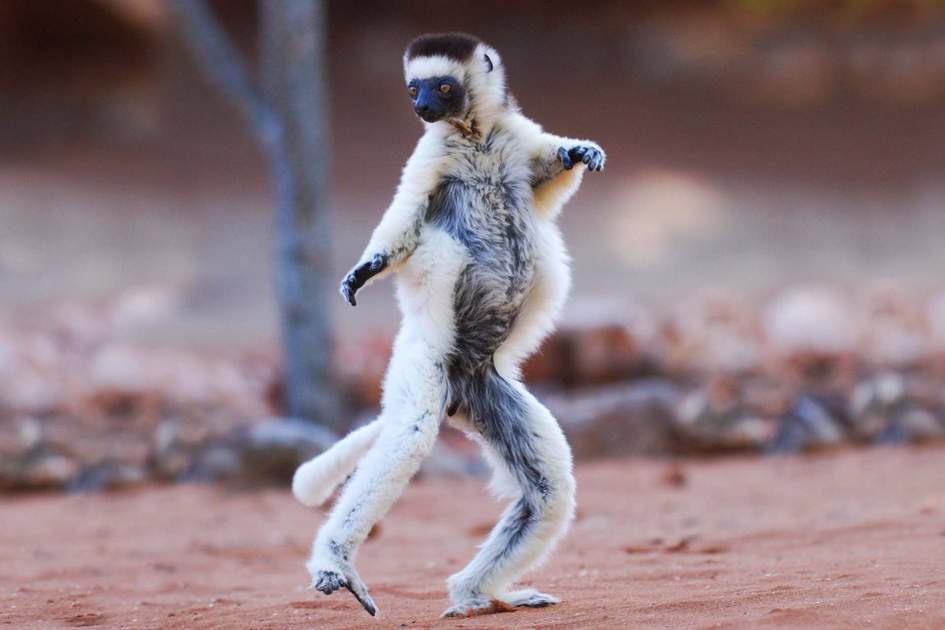Beautiful Verreaux's Sifaka 'dancing' in Madagascar 18 Nov 2016

About this photo
Madagascar, sitting in the Indian Ocean off the southeastern African coast, is a country rich in ecology and wildlife. It is home to a number of fascinating endemic – and also many endangered – species.
Verreaux’s Sifaka (named because of their distinctive ‘shif-auk’ call) are Madagascan lemurs, living mainly in spiny forests but also found in rainforest environments. They have thick, soft fur; are mainly white with coloured (black, grey or gold) patches on their heads and limbs; and have long tails for balancing in trees. Indeed, they are highly adapted for treetop living and can jump around 32ft (10 metres) in one go. On the ground, they move or ‘dance’ along in a sort of sideways hop on their hind legs, their front legs held up high to aid balance.
Verreaux Sifaka live in matriarchal groups of 2–12. Their social habits are complex and sophisticated; scientists have observed post-conflict reunions following bouts of aggression. These fascinating animals are sadly endangered due to the destruction of their natural forest environments, with fewer than 10,000 currently living in the wild. While some types of Verreaux Sifaka are protected by a local Malagasy tradition forbidding the consumption of their meat, others are hunted and eaten.
See beautiful lemurs in the wild on Insight Guides’ Wild Madagascar trip.




